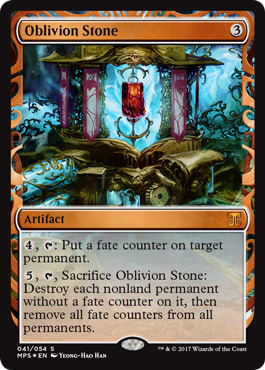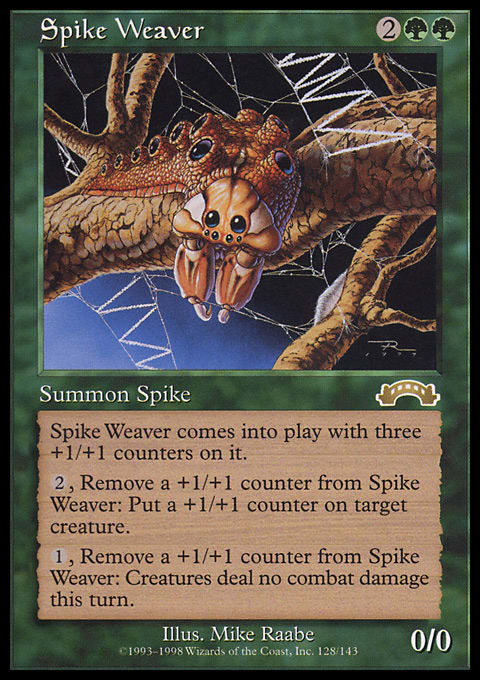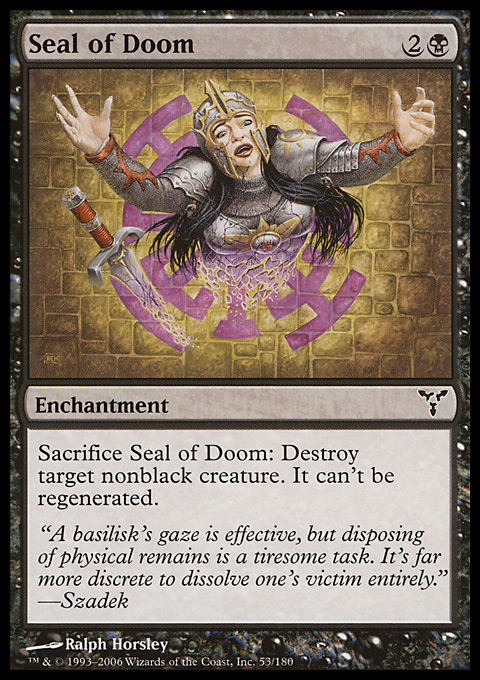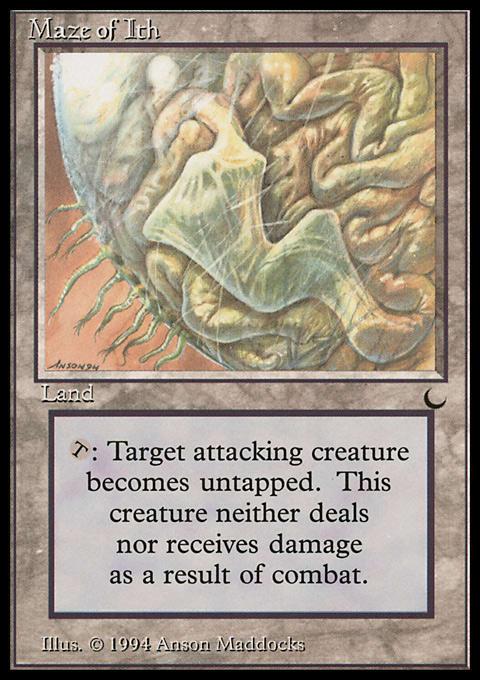One of the biggest issues with writing a Magic column for a while is that you subconsciously assume that most of the readers of your recent articles have read your older ones. I know it sounds silly when I write that line, but it happens all of the time. Today, I want to spend an entire article on the Rattlesnake Effect, which is a powerful effect in any multiplayer Magic format, such as Commander, Chaos, and whatever else. I’ve spoken of it before.
In one of my first articles for this website, I spent a few paragraphs going over it. It’s a theory that has existed for quite some time, and readers who are have read the work of older multiplayer writers may recall it. However, there are a lot of newer players who are not caught up on multiplayer theory, and this article is for them. I promise you that if you are not familiar with the Rattlesnake Effect, by the time you have finished this article, you will be able to better read the game on your next Commander night, and you will have some new tricks for your next deck.
The Rattlesnake Effect is actually very simple. It ties into the psychology of Magic players. A rattlesnake scares off people with its rattle, and when you come across it, you back off. Similarly, some Magic cards scare off attackers by shaking a rattle of some sort. What I want to do today is show you a lot of rattlesnakes in Magic, how to use them, and why they work.
What Is a Rattlesnake in Magic?
A commonly seen card in Commander and other multiplayer formats is the artifact that can sacrifice to destroy much of the board. Whether we are talking about Nevinyrral's Disk or Oblivion Stone, there are many who play them. Have you ever noticed how one being untapped, with mana behind it, changes the way people are playing? If you have a board position that is very powerful and don’t want to lose it, you sort of ignore the player with the Disk effect ready to go. Instead, you attack elsewhere so you don’t upset the Disk holder. Your behavior changes as a result of a card with a very big rattle.
Do you know why the rattle on a rattlesnake works? Because the snake is poisonous. If it were a normal, nonpoisonous snake, the rattle would attract people to it to eat it. Many creatures are camouflaged they don’t want to be eaten, but most poisonous creatures are brightly colored, have strong odors, or shake rattles to warn off people. Consider Nevinyrral's Disk to be the poison dart frog of the table. It warns off everyone—if anyone comes too close, it will pop and destroy all of the nonland permanents around.
Rattlesnake cards are that threaten harm if anyone comes its way. If you don’t heed the warning, you are in danger of being bitten. There are no rattlesnake cards in duels because you can’t warn someone off with a simple permanent. If your foe plays a Disk, you just force him to pop it, and you move on. But when I have multiple avenues of attacking, a rattlesnake card is very effective at sending me down a different path.
Let’s start with a classic example I’m quite fond of. Compare Seal of Doom with Dark Banishing. Both are 3-mana black commons that will slay any nonblack creature. In a duel, the instant Dark Banishing is much better. You can use it any time; plus, your enemy doesn’t know about it, so he can’t play around it. In a multiplayer game, you want your foes to play around it. You drop Seal of Doom, and then anyone who has a big, nonblack beater out may swing elsewhere. If I attack the player with the Seal, I may lose my creature. Instead, I’ll just attack somewhere else. Seal of Doom is often better than Dark Banishing in multiplayer because I send someone elsewhere. It’s a good rattlesnake.
What Sorts of Rattlesnakes Are There?
Many rattlesnakes work because they threaten an attacker. Take the uncommon Soul Snare from the Commander decks. It sacrifices to exile an attacker headed your way. This is a perfect card that sends someone somewhere else. There is no chance of you exiling any creature as you could with a Seal of Doom. There is no chance of exiling an attacker that is swinging at another player. It only defends you and your planeswalkers. Finding cards that have this effect on attackers is quite easy. Everything from Lieutenant Kirtar to Seal of Fire works.
The next sort of rattlesnake card is the Disk of the table. These are ones that will threaten an entire board of creatures—and perhaps more—with their effects. When I’m down, I often swing into a player with one of these cards that’s ready to be used in order to force the player to pop it. That enables me to be the first player after mass removal to play creatures. Barring haste, I’ll be the first player after mass removal to be able to attack, and that’s a potent bit of tempo. Here’s one of my favorite tricks: When I’m attacked by a huge army that’s coming my way because a third open player has an untapped Disk, I’ll cast Naturalize on the Disk. That forces the player to use it or lose it. He’ll almost always pop it, and we won’t have to deal with that again. The attacking creatures are probably gone, and now I’m safe.
While there aren’t that many permanents of this type, they see quite a bit of play. From Scourglass to Pernicious Deed, we have a lot of opposing cards on the battlefield quite often. Being able to play around them and understanding their power so you can harness them is how you turn a losing situation into a manageable one.
If you think rattlesnakes end at simple permanents that destroy creatures, allow me to disabuse you of that notion. Among my favorite permanents in multiplayer are those that grant all of my cards flash—such as Leyline of Anticipation and Vedalken Orrery. After the Orrery saw print, I loved it and played it constantly. I would tutor for it with Tinker and power it out with many other cards. It became one of my pet cards for all multiplayer games. I was confused, though, because I thought enemies valued it much differently. They must not have seen it as a threat—they wouldn’t attack me while I had an Orrery out. I figured that they had poor threat assessment.
Eventually, I realized that the reason I went unattacked was simply that I had mana up and a big grip of cards. When every card in my hand has flash, people fear what can come out to block their attackers. There could be all sorts of cards in there to blast them for daring to assault my position. No one wants to attack into a Keiga, the Tide Star or either Akroma. Granting all of my cards flash was a rattlesnake of a different sort, which sent people to attack others. But it would only work for as long as I had mana open and cards in my hand. Look for cards such as Winding Canyons to provide this sort of leverage in the defense game.
The next type of rattlesnake also needs fuel to operate. These are cards with activations that will damage or destroy creatures, but they use resources to do it. Take a look at Stormbind. This is an enchantment that stays in play, and for 2 mana, you can randomly discard a card to dole out 2 damage of hurt to any target you wish. With both mana available and fuel (in this case: cards in your hand), you can scare off attackers. To be fair, because it’s a random discard, you might encourage people to use the Stormbind to blow through your hand. But there are many others.
Attrition is a black enchantment that takes just 1 mana and sacrifices a creature to destroy any nonblack creature. It’s a reusable Seal of Doom as long as you have mana and fuel (in this case: other creatures). If you have small creatures, token creatures, or dudes with death triggers (such as Solemn Simulacrum), it will seem that you are willing to sacrifice to blow up attackers. The combination of Attrition, a few black mana, and creatures that look like fodder will create a potent rattlesnake effect. It’s unlikely that you will see people attack you through that, unless they have either small fodders of their own or creatures immune to Attrition (by having shroud, having hexproof, being black, being indestructible, or having protection).
If you look, you’ll find several cards with similar effects. A good one is Wren's Run Packmaster. If you have 3 mana available, you can make a 2/2 Wolf, which is given deathtouch by the Packmaster’s static ability. Ground creatures don’t want to swing into that. Other good examples include Shard Phoenix and Silklash Spider.
Another sort of rattlesnake card is one that encourages foes to attack another because they will prevent the damage. After all, when I attack someone, I want bad things to happen to him. I want to see his life total go down. But if he has Maze of Ith and Kor Haven, why even bother to attack with my two beaters? Instead, I’ll head somewhere else to smash the countryside.
Sure, there are reasons to attack into him and force him to use his defense (so someone else can snake through), but you often see people head in another direction when confronted by a Maze effect on the table. The best thing is that there are so many of these cards that go relatively unplayed in many decks. A simple Trap Runner can tap to consider any attacking creature blocked. If it is devoid of trample, it won’t deal any damage. You can blow a Horn of Deafening to prevent combat damage from a foe as well. (By the way, you can purchase a Legends version of Horn for a cheap price. Check it out).
My favorite of these cards has to be a Spike Weaver. You invest 4 mana into a creature with 3 +1/+1 counters. For 1 mana, you can pull 1 off to Fog for the turn. A lot of opponents won’t attack into a Spike Weaver. With so many ways of adding a counter to it today, it’s even more powerful than ever. When you can force people into attacking another player by having the ability to prevent damage, you are adding to the rattlesnake power of your deck!
The final type of rattlesnake is one that does not threaten a creature, but instead threatens the actual players. With Door to Nothingness in Magic 2013, consider seeing it on the battlefield. Imagine if I had an untapped Door and the mana to use it. You would never attack me—because if you did, I would simply sacrifice my Door to kill you. That’s a powerful ratter the Door has.
While there are not many of these sorts of permanents, there are a few in red. Cinder Elemental and Goblin Dynamo can tap and sacrifice to deal X damage to a player, where X is the mana you put into the sacrifice effect (plus ![]() to start it). I call them Blazes on a stick. If an opposing foe has less life than I have mana available, he can never attack me. If he does, I simply Blaze him away.
to start it). I call them Blazes on a stick. If an opposing foe has less life than I have mana available, he can never attack me. If he does, I simply Blaze him away.
Can You Tell Me More About Rattlesnakes?
There are some cards that are thought of as rattlesnakes but are not. These force people to attack elsewhere due to things such as taxing. Take Propaganda and Ghostly Prison as examples. These are both great enchantments that force an attacker to spend 2 mana per creature to attack you. Since a lot of people don’t want to bother with spending that mana, the creatures head to blast a path elsewhere.
This is not a rattlesnake. First of all, nothing is threatened. And there is no poisonous bite to back it up. Even Spike Weaver threatens and delivers a wasted attack step, but as long as you pay your taxes, you can swing all day and every day for as much damage as you choose. That’s not a rattlesnake.
I like combining them with rattlesnakes and good defensive creatures. Imagine my defense has Indomitable Ancients, Kor Haven, Maze of Ith, Commander Eesha, Ghostly Prison, and Avenger en-Dal. You have to spend mana to attack, and then I can Maze or Kor Haven two attacks, block any attacker with my protection-from creatures and flying Eesha, who takes no damage, block with a 2/10 Ancients, which probably isn’t dying to combat damage, and I can tap and use the Avenger to exile an attacker that comes my way. That is a very difficult position to assail.
When do Rattlesnakes Fail?
One last issue that we need to understand when discussing this topic is when rattlesnakes fail to protect you. You can never solely rely on rattlesnakes for defense. There are a lot of times when I may swing your way despite any rattles you can shake. Why?
If I feel you are in the most powerful board position, I may attack despite losing some creatures along the way. Sure, your Seal of Doom destroys my biggest 7/7 trampler, but what about these two 6/6 Wurm tokens? I can still smash your face with them. Similarly, as I mentioned before, I’m often happy to attack the guy with the untapped Disk because then when it goes, I’m the first to play stuff post-sweep. If you have permanents out that offend other players (such as Rhystic Study), you may find yourself assailed by attacks that would otherwise go elsewhere due to your rattlesnake cards.
Many players don’t read every card at the table. Another thing that happens is a person will attack into a rattlesnake because he didn’t know it was there. This happens. A person might also not tend not to respond well when you tell him ahead of time that if he attacks you, you will sacrifice that Soul Snare to exile one of his dudes. Let the cards make the threats. Another version of this is when a person doesn’t know what a card does, or he may think it’s something else. Sometimes, the art or name is similar to another card, and a player will mistakenly attack into it.
Sometimes, players try to make a rattlesnake into a card it’s not meant to be. How many times have you witnessed someone attacking and seen the defender pull out Maze of Ith from a stack of lands in the back? The attacker states that he didn’t know the person even had it out, but the Maze player will point out that he announced it something like ten turns ago. Sometimes, defenders don’t treat rattlesnakes the way they should. Take the card and move it to the top of your permanents. If I have other artifacts or enchantments or creatures, I like to have them closer to me on the table and keep the rattles farther out from me . . . by my foes.
The Rattlesnake Effect is not totally guaranteed to keep people off your back, but it can often do so. Having a few permanents that suggest harm to any would-be attackers is a nifty way to prevent them from coming your way. Knowing what to look for in rattlesnakes will not only make you a better player—you can plan and play around them—but it can also help you prepare a better deck for your next multiplayer game. I hope that you found something useful from today’s article!
See you next week,
Abe Sargent
































